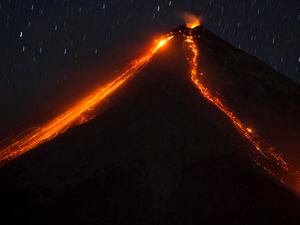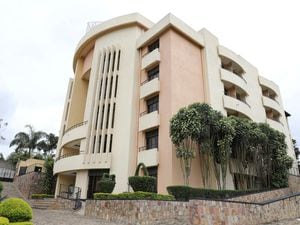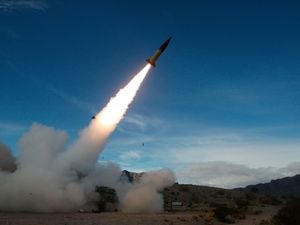From Mount Vesuvius to White Island: Volcanic eruptions throughout history
More than half of the 1,500 active volcanoes on Earth are located in six countries: the US, Russia, Indonesia, Iceland, Japan and Chile.

The deadly eruption of a volcano in New Zealand’s Bay of Plenty on Monday left six people confirmed dead and dozens of visitors to the island injured.
A famed tourist attraction, the White Island volcano is one of several in New Zealand and thousands that encircle the Pacific.
Most lie far from major cities and are watched carefully for signs of danger: normally visitors are permitted to explore the volcano’s crater.

It is impossible to know when or if the 1,500 active volcanoes on Earth might blow, and that makes them an unpredictable, ever-present hazard.
According to the US Geological Survey, more than half of them are located in six countries: the US, Russia, Indonesia, Iceland, Japan and Chile.
Here are some of the worst volcanic eruptions recorded:

– Anak Krakatau in Indonesia erupted on December 22 2018, triggering a tsunami that killed more than 420 people and displaced 40,000. The volcano, whose name means Child of Krakatau, grew from the remains of Krakatau, whose 1883 eruption triggered a period of global cooling.
– Volcan del Fuego in Guatemala buried the village of San Miguel Los Lotes in mud and ash in a June 3 2018 eruption that killed more than 200 people. Its lava flows reached temperatures of about 1,300F (700C).
– Mount Mayon in the Philippines erupted for several weeks in January 2018, belching red-hot lava fountains and huge columns of ash and lava into the sky in the latest of dozens of eruptions over the past 500 years. The explosion of Mount Pinatubo in 1991 was one of the 20th century’s biggest, killing about 800 people.

– Mount Ontake in central Japan erupted unexpectedly in 2014, killing 47 people who were caught off guard while resting after climbing the peak. Most were killed by flying rocks. Survivors battled hot air and ash, rocks and debris as they fled the mountain. Seismologists said there had been no warning of such a big eruption.
– Mount Unzen in southern Japan, near Nagasaki, exploded in 1991. Most of the 43 people who died were killed by pyroclastic flows of hot ash and steam that raced down the mountainside. An eruption in 1792 killed an estimated 15,000 people.
– Nevado Del Ruiz in Colombia erupted in 1985, killing 25,000 people, many of whom died when a 150ft-high wall of mud plummeted down the mountainside. That followed an 1845 eruption that killed 1,000 people.

– Mount Pelee, long dormant, surprised the residents of Martinique with deadly eruptions in 1902 that killed nearly 30,000 people in mudflows and a flood of lava particles suspended in gases and fires ignited by hot ash that swept over the city of St Pierre.
– Mount Tambora in Indonesia exploded in 1815 in the biggest known eruption in 1,000 years, one so powerful it too altered global weather. About 92,000 people are thought to have died from the eruptions, including 82,000 who perished of starvation and disease and 10,000 killed by its direct impact.
– Kilauea, on the island of Hawaii, killed more than 400 people in a 1790 eruption. Many were at its caldera at the time.

– Laki and Grimsvotn wiped out much of Iceland’s livestock and about 10,000 people died in a famine after months of eruptions in 1783-85 that spewed toxic gases. They left pastures coated in fluorine and caused acid rains and emissions that lowered temperatures in the northern hemisphere.
– Mount Vesuvius in Italy unleashed lava flows in a 1631 eruption that killed 3,360 people. An estimated 13,000 perished in an eruption in the year 79 that left many victims entombed in ash and rock.





